French Fries 101: What Commercial Equipment Do I Need?
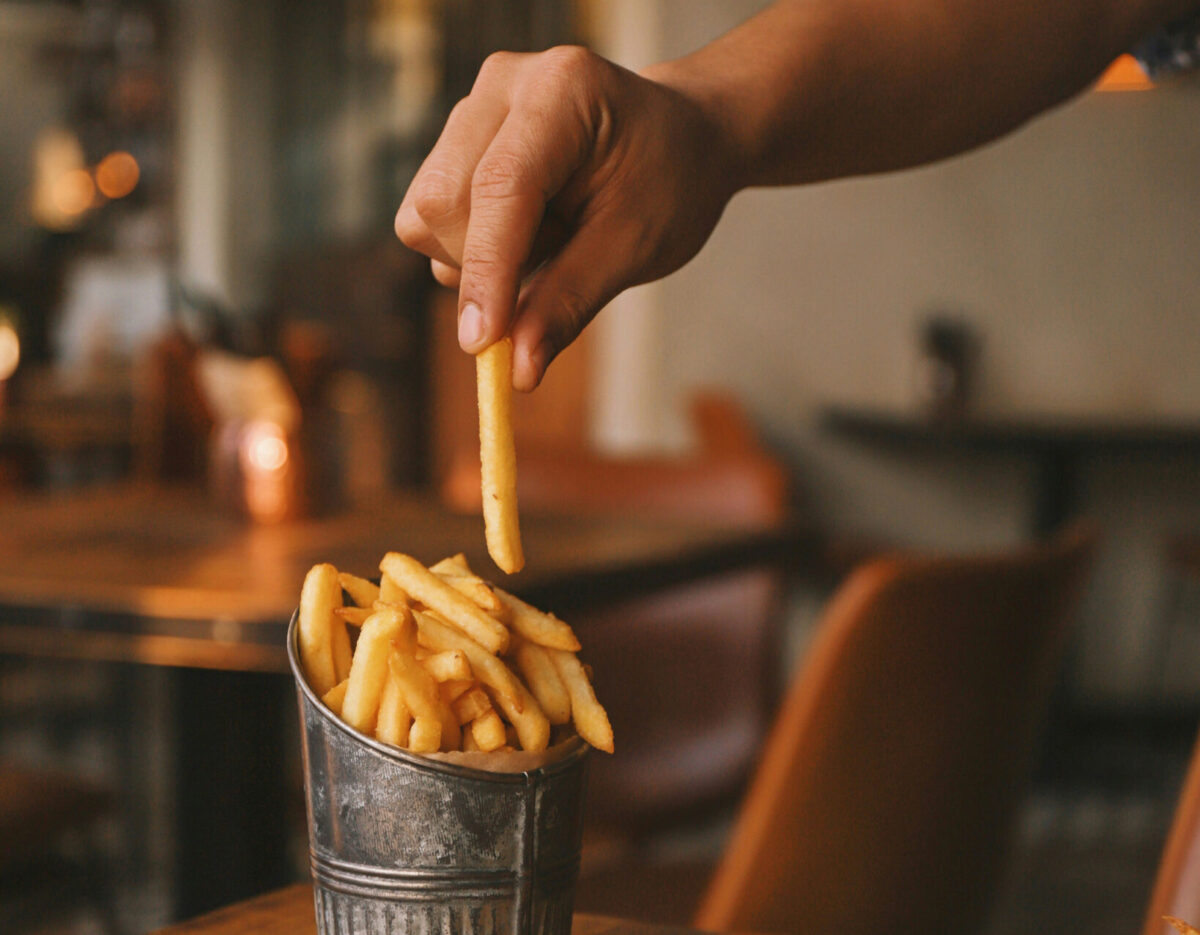
Few restaurant menu items are as well-known and universally adored as the french fry. The quality of a restaurant’s fries can make or break its reputation. But while they seem easy to whip up, great fries are anything but. They require good timing, good technique, and even better equipment.
If you’re thinking of serving french fries in your restaurant, there are a few pieces of equipment you’ll need: potato peelers, cutters, and slicers, a commercial fryer, timers, thermometers, fry scoops, oil disposal equipment, and drying racks or fry baskets.
Getting to the Root of Potato Cutters and Slicers
Several decisions go into creating your perfect french fry. Do you peel them or leave the potato skins on? Do you want thin-cut, crinkle-cut, or wedge fries? Should you batter them? Add seasonings? The options are truly endless.
Fries are often one of the signature items on a restaurant’s menu, so choosing the right size, cut, and style of your fries is important. If you prefer crispy fries, thinner cuts are probably for you. Waffle or steak fries would be better if you love lots of seasoning or a thicker potato texture and flavor. Either way, you’ll want to ensure your potatoes are cut into uniform strips for a consistent cook every time.
If you know that your kitchen staff’s knife skills “make the cut,” you could always opt to have them cut the potatoes by hand. However, if you’re serving more than a few batches of french fries daily, a mechanical french fry cutter—manual or electric—will greatly help.
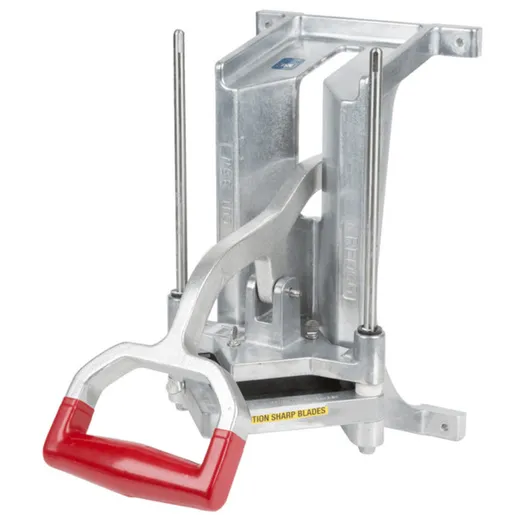
Manual fry cutters feature a blade plate, a space to put your potato, and a lever you can pull to force the potato through the plate. They do an excellent job of making consistently shaped/sized fries but require a human operator to load and cut the potatoes.
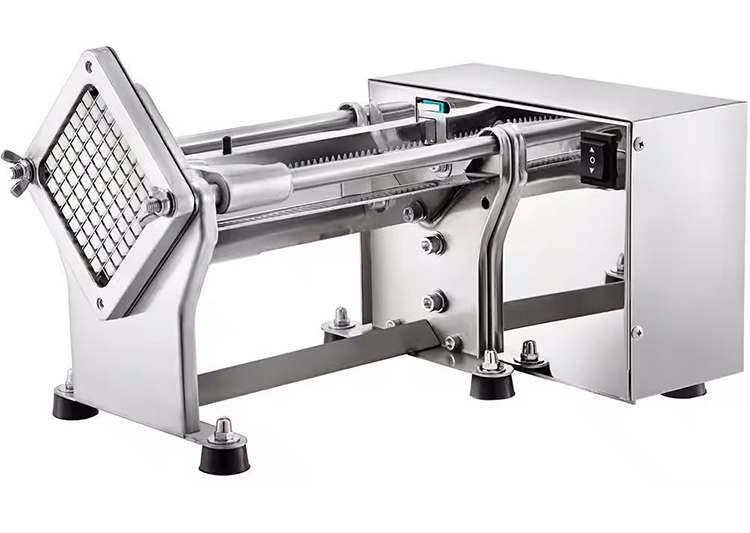
Electric cutters utilize machine-powered push blocks to push the potato through the blades. They also have a few other advantages: they are faster, often have a plastic guard to protect the potatoes and the blades, and can even come in large sizes that can handle multiple potatoes at once.
The differences in speed between manual and electric cutters may seem negligible, but when you’re dealing with large-scale fry production and hundreds of orders each day, those seconds really add up. Just make sure you have the right cutters for your preferred cut types!
Prep Pro-Tip: Soak Those Taters!
Once you’ve sliced and diced the potatoes, what next? Are they ready for the hot plunge? Not quite yet. If you want the perfect french fry, soak the sliced potatoes in cold water for 2-3 hours. This prep step serves two key purposes. First, it prevents the potatoes from browning – this is helpful if you prep a lot of french fries at once but aren’t frying them for a while. Second, and most importantly, soaking the raw fries removes the starch from the outside of the potato, allowing them to crisp up perfectly on the outside and stay light and fluffy on the inside during the frying process. Before frying, drain the potatoes and dry them off completely to remove the excess moisture.

Cambro containers are the perfect tool for this job. Fill the container with enough (cold) water to cover the potatoes, cover the container with a lid, and let sit in the refrigerator until you’re ready to fry.
Commercial Fryers to Fry For
You’ll need the right equipment to fry those puppies up to get that signature crispy texture on your fries! Depending on the size of your operation, you could opt for a batch fryer or a continuous fryer.
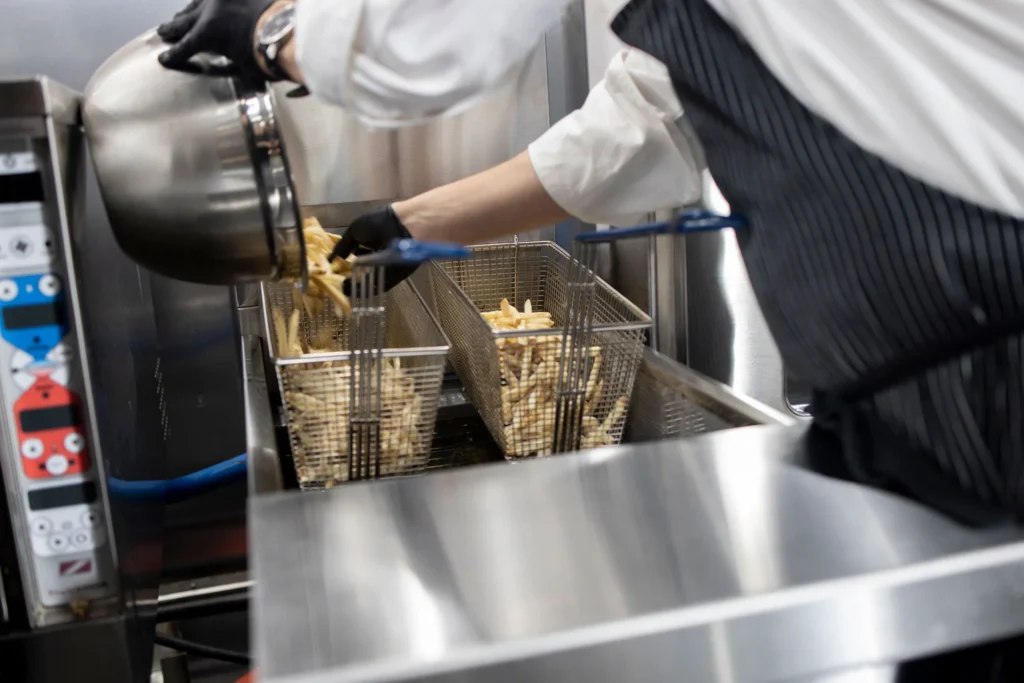
Batch Fryers
Batch fryers are the deep vat fryers you see in most open-kitchen restaurants. They usually have multiple frying wells for oil, which means you can drop multiple batches at a time in separate baskets.
The biggest advantage of these fryers is that they can fry more than just fries. You could load one basket with fries, another with chicken strips, and another with donuts, and they could all fry simultaneously. The fryer wells are open on top and have a drain underneath, which makes cleaning the fryer and monitoring the quality of the frying oil (to prevent burning) easier.
On the other hand, because each batch of food has to be fried individually, these fryers can take longer and might yield inconsistent results if one batch goes longer than another or if the temperature of the oil changes. They can also be prone to splattering since the operator is close by repeatedly putting batches in the hot oil.
Continuous Fryers
A continuous frying machine passes food through hot oil on horizontal motion conveyors, then drops the fries into a large bowl or heated draining rack.
The clearest advantage here is that cut potatoes can be automatically fed through the fryer without requiring a human to drop batch after batch for each order. Since the process is continuous, the results will be more consistent, batches will finish more quickly, and they can process more french fries simultaneously. This means they are better for high-volume kitchens and food manufacturing operations.
However, continuous fryers tend to be more expensive than batch fryers and are more difficult to clean since the conveyor belts are layered and have many small interlocking parts.
Small Potatoes: What Size Fryer Do I Need?
The amount of fries you can produce per hour depends on the size of your fryer. Some experts recommend multiplying the amount of cooking oil your fryer can hold by 2 to determine the number of pounds of fries you can cook per hour. So, if you have 30 pounds of oil, you can produce up to 60 pounds of fries per hour. Of course, that number should also be multiplied by the number of frying baskets your fryer can accommodate at any given time.
Small countertop fryers can accommodate 10 to 30 pounds of cooking oil at a time, but larger floor models can hold up to 100 pounds—that’s a lot of fries!

Gas or Electric?
Your kitchen may be able to accommodate either electric or gas fryers, but there are pros and cons to consider when choosing which one is right for your commercial kitchen.
A gas fryer can reach its high temperature faster than an electric fryer. This means you can get to frying more quickly and get a crispier exterior texture in hotter oil for the second fry. However, they are more costly to install because they have to be connected to a gas line, making them more difficult to move for cleaning.
Helpful Tip: Ensure you are frying in oils with high smoke points, like peanut oil or vegetable oil.
Electric fryers take longer to reach the right temperature (usually 350 degrees F), but the electric heat allows them to quickly recover heat between batches. Quicker recovery means more batches can go in per hour. Electric deep fryer models are also easier to move and install and can be relocated easily since they only need to be plugged in to work. They tend to be less expensive to maintain, require fewer repairs, are easier to clean, and are more energy efficient.
Don’t Forget: to drop your fries into the oil in the first place, you’ll need fryer baskets. Fryer baskets help keep oil splashes to a minimum and make it easy to drop food in, jostle them around to prevent sticking, and take them out without fishing around with a slotted spoon. Fry baskets also function as drip racks to help get all that excess oil off your food without wasting paper towels and can hold the fries and keep them crispy until they’re ready to be served!
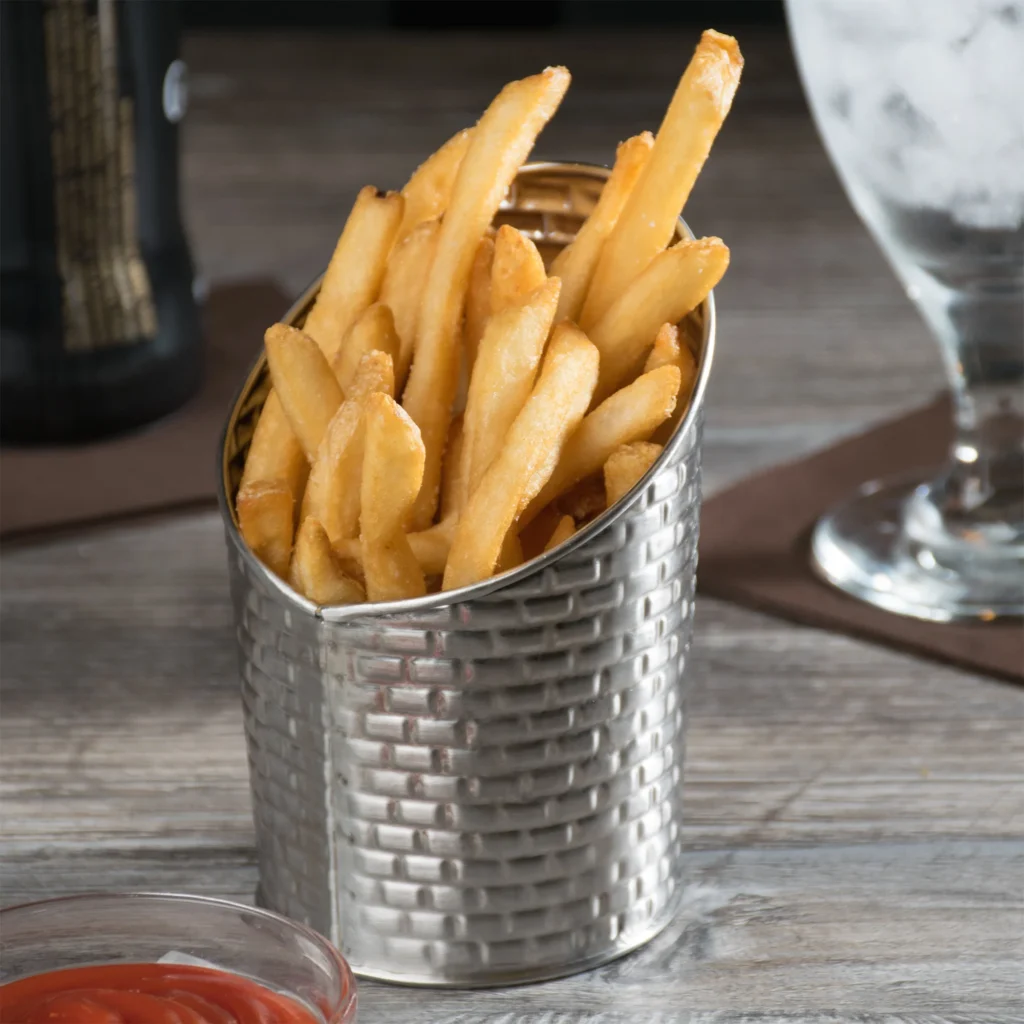
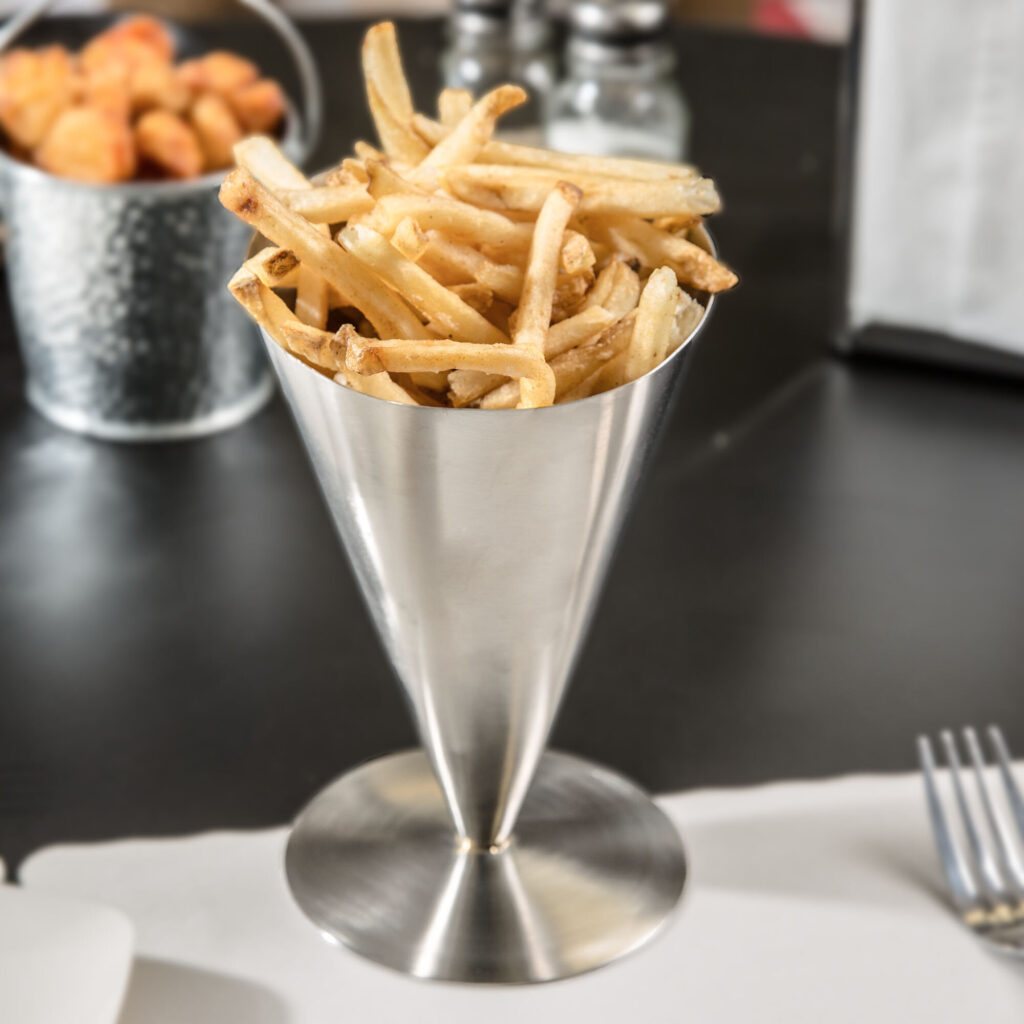
French Fry Essentials: Tools and Accessories
Don’t underestimate the importance of your kitchen’s small tools for making the perfect french fries. In the restaurant biz, consistency is key, so utilizing the right tools through the entire process, from washing and peeling to timing and scooping, will help your kitchen staff get their frying process down to a science so you’re putting out the best fries every time!
- Vegetable Peeler: To peel or not to peel? Some restaurants don’t peel their potatoes. However, you’ll need a vegetable peeler if you want that even golden color. But don’t worry – you can get a countertop peeling machine to do all the work! Just drop the fresh potatoes in and watch them come out nice and clean.
- Fry Scoop: These handy triangular scoopers can pick up an order’s amount of fries and funnel them nice and straight right into a fry bag or box.
- Timer: Frying is a notoriously tricky art, so you must know the frying time. Even a minute too long in the hot oil can result in burned fries!
Thermometer: Commercial fryers often have built-in thermometers, but if yours doesn’t, you’ll need to measure the oil temperature with a candy thermometer.
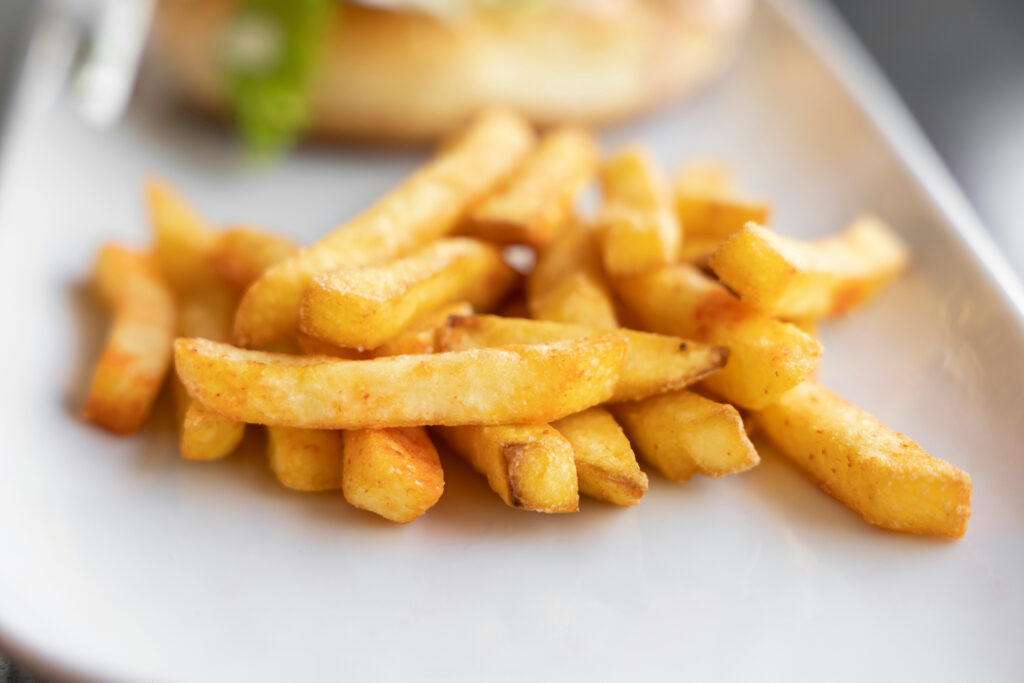
Achieving the Golden Crisp: Oil Filtration & Disposable Systems
One of the more challenging aspects of the frying process is filtering and disposing of the used oil. When frying, bits of potato or breading can come loose in the oil and burn after the food has been taken out. Those burned bits can quickly spread that burned taste to anything you fry. The best way to prevent this from happening is by filtering your oil!
Filtration Technology
- Built-in Systems: Some deep fryers have built-in filtration systems. These machines draw out the cooking oil, filter it, and recycle it into the frying vat.
- External Units: If your fryer does not have a built-in filter, you can add a secondary machine that functions similarly. The oil moves into and out of the filter with hoses that you install in the fryer vat, and the filter itself sits next to the fryer.
Oil Disposal
When it comes to disposing of your used cooking oil, safety should be your highest priority. Handling that much oil can be dangerous for your staff, and dumping it outside can contaminate the groundwater and soil.
To safely dispose of your oil, either collect the oil in large industrial drums to be picked up by an oil recycling company later or install a grease trap in your drains. Grease traps function by separating the oil from the water after you pour them down the drain. Once the oil is trapped, it can easily be pumped out and recycled.
- Manual grease traps require you to pump the oil into receptacles and then clean the trap. If you don’t clean them regularly, they can smell and eventually block the drain entirely. Manual grease traps are installed underneath the sink for easy access and don’t require electricity.
On the other hand, automatic grease traps have a built-in pump that senses when the oil level has gotten too high and empties the oil into a receptacle for you. However, they use electricity to pump the oil and can cost up to five times the price of a manual grease trap.
Don’t Fry Your Money Away: Energy Efficiency and Cost Savings
Commercial deep frying takes a lot of resources and energy. However, there are many ways to make your frying process more energy-efficient and reduce utility bills.
- Don’t overfill your fryers—more oil means more energy is required to heat it. Ensure you have the correct fryer size and use only the necessary amount of oil.
- Don’t let your fryer idle. It takes energy to keep large amounts of oil at very hot temperatures, so you don’t want to just let your fryers run when they’re not in use. If you won’t use your fryer for over an hour or two, you should fully shut it down.
- Invest in high-efficiency fryers. Energy-star-rated fryers use much less energy and last longer than other models, saving you money in the long run!
- Maintain regular cleaning and filtering. Keeping your fryer clean and free of floating food particles will help your oil last longer. The longer it lasts, the less frequently you’ll need to replace it. This leads to less waste and less energy required to clean, maintain, and recycle all that oil.
Helpful Tip: Cleaning your oil vats using hot, soapy water, baking soda, and vinegar will help ensure that you get every bit of residue out of the fryer, which will help extend the life of your oil and your fryer. Don’t forget to fully cool the oil and machine AND unplug the fryer before cleaning!
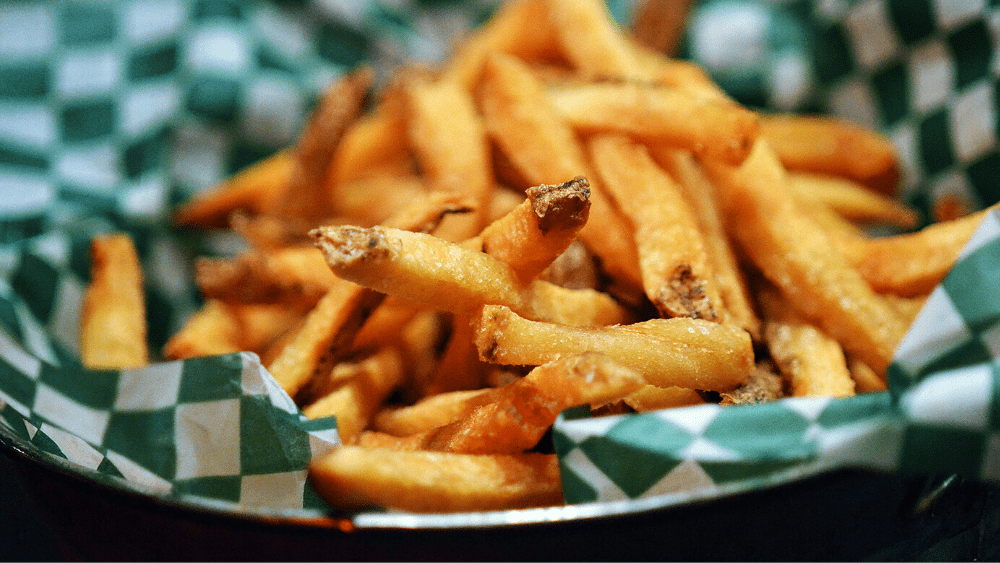
Our Final Tots on the Matter: Fry Golden with Eleven36
At the end of the day, having efficient, clean, high-quality equipment will take your french fry game from sad and soggy to crispy perfection! At Eleven36, we know how big of a difference having the right equipment can make, which is why we only stock the best commercial equipment options for your kitchen! Even if you already have a setup for serving fries in your restaurant, it is worth looking around and evaluating if there are places where your kitchen could be saving you money, saving on energy usage, or reducing waste. Check out our line of premium commercial equipment here, and get ready to start saving money and raking in the…potatoes!
